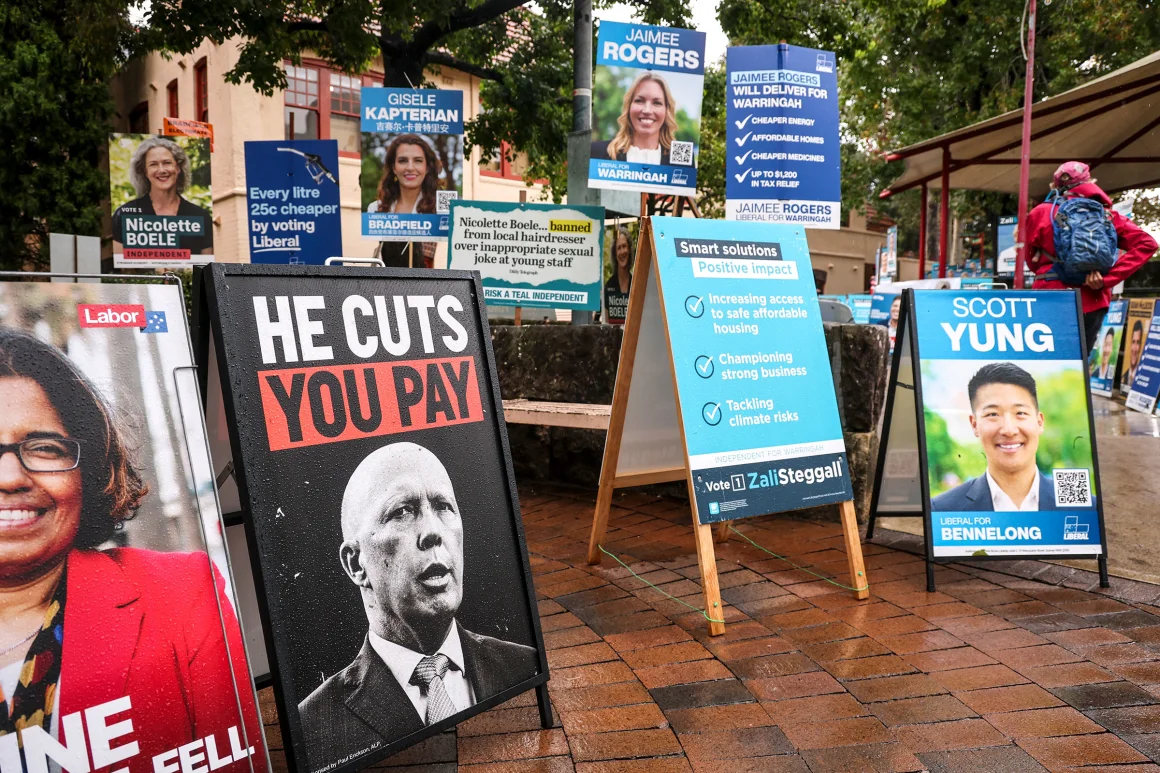Polls have closed in Australia’s eastern states as the country concludes a closely contested national election, with cost-of-living pressures and housing affordability dominating voter concerns. The outcome is being watched globally for signs of a populist shift, amid comparisons to movements seen in the United States and Europe.
Prime Minister Anthony Albanese of the center-left Labor Party is seeking a second term, facing off against Peter Dutton’s center-right Liberal Party, which has spent three years in opposition and is now campaigning to get the country “back on track.”
Albanese cast his vote on Saturday afternoon in his safe Labor electorate of Grayndler in Sydney, accompanied by his fiancée Jodie, his son Nathan, and their dog Toto.
What Are Australians Voting For?
Australians are casting ballots for both chambers of parliament: the lower house (House of Representatives) and the upper house (Senate).
In the House of Representatives, voters elect Members of Parliament (MPs) to represent their local area. This chamber initiates most legislation and currently comprises 151 seats, though this has been reduced to 150 this year due to redistricting. MPs serve three-year terms.
In the Senate, voters elect 76 representatives who serve six-year terms. This election will see 40 Senate seats contested. The Senate’s role is to review legislation passed by the House.
To form a majority government, a party must win at least 76 seats in the House. If no party wins a clear majority, the one with the most seats typically forms a minority government with support from independents or smaller parties.
What Did the Last Parliament Look Like?
In the 2022 election, Labor won 77 of 151 seats in the House of Representatives, forming a majority government. The Liberal-National Coalition secured 58 seats, while the Greens claimed four.
In the Senate, the Labor Party held 25 seats before the election, while the Coalition held 30. The Greens had 11, and six were held by minor parties and four by independents. Parliament was dissolved on March 28, leaving a caretaker government in place during the election period.
Key Issues Shaping the Election
1. Cost of Living
Inflation and rising interest rates have driven up the cost of everyday items, including an 11% rise in egg prices last year. The Reserve Bank of Australia raised its benchmark interest rate several times under the Albanese government, reaching 4.35% in November 2023. Annual inflation peaked at 7.8% that year.
2. Housing Prices
Housing affordability has become a flashpoint. According to PropTrack, a household in Sydney now needs to earn AU$280,000 (US$180,000) annually to afford the median house price of AU$1.4 million (US$900,000). Sydney ranks as the second least affordable city globally, per the International Housing Affordability survey.
Average rent in Australia rose 4.8% in the past year, after an 8.1% increase in 2023, according to CoreLogic.
“This is a crisis that took decades to create, and it’s going to take decades to fix, but we do need someone to step up and take the first steps,” said Maiy Azize, national spokesperson for the housing advocacy group Everybody’s Home.
Labor has pledged to build 100,000 homes for first-time buyers, while the Liberal Party promises infrastructure investment and faster housing approvals by cutting red tape.
3. Energy Transition
Voters—particularly younger Australians—are demanding a faster shift to renewable energy. A 2023 survey by Energy Consumers Australia found that nearly half of Australians aged 18 to 34 want the country powered by renewables by 2030.
While both major parties support transitioning from fossil fuels, their strategies differ sharply. The Coalition is backing the construction of seven government-funded nuclear power plants, expected to begin generating energy by 2035.
Labor argues that existing coal and gas plants won’t be enough to bridge the gap during that wait. Instead, it aims to supply 82% of Australia’s grid with renewable energy.
Why the World Is Watching
The election has drawn international attention amid speculation of a possible political shift inspired by global populist trends. Observers are watching to see if Australia experiences a conservative swing, similar to those seen in parts of Europe and the U.S.
While cost-of-living issues are front and center for Australian voters, the broader implications of the result may resonate far beyond the country’s borders.






